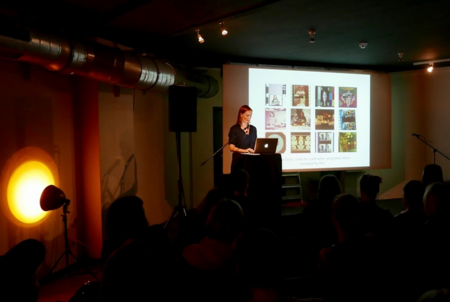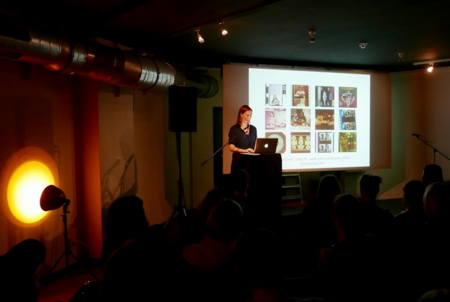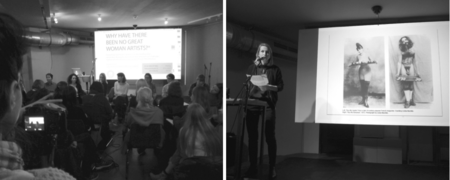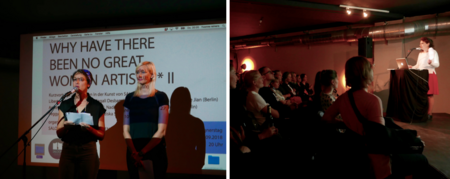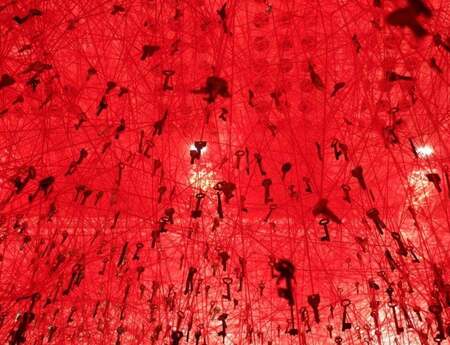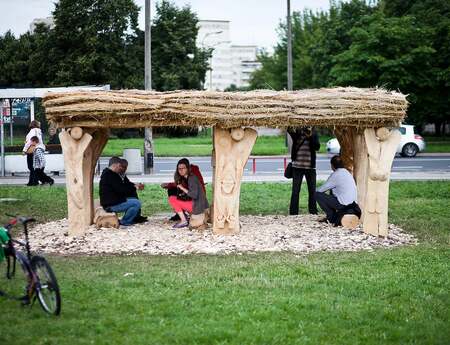Networked. Networks for female artists
"No special rights, but human rights", Clara Zetkin, a feminist of the first wave, demanded in 1910. For over a hundred years women have been fighting for their equality, unfortunately not always successfully. In domains that have been in male hands for centuries, especially, many women still fail.
The art business traditionally belongs to one of these domains. Here, female artists are not only dealing with the much-discussed gender pay gap, but also with a gender show gap, as Josephina Posch's text shows. Only mutual support and cooperation can change the situation. That is why many women artists now focus on networking.
The idea of an organisation exclusively for women was already developed in the first half of the 20th century, early examples are Zonta or Soroptimist. Both are networks for working women in managerial positions. As non-governmental organisations, both nevertheless have representatives at the UN, UNESCO, UNICEF and WHO.
There are also associations in the arts sector that focus on female strength and common ground. We have spoken with two of these associations:
SALOON Berlin
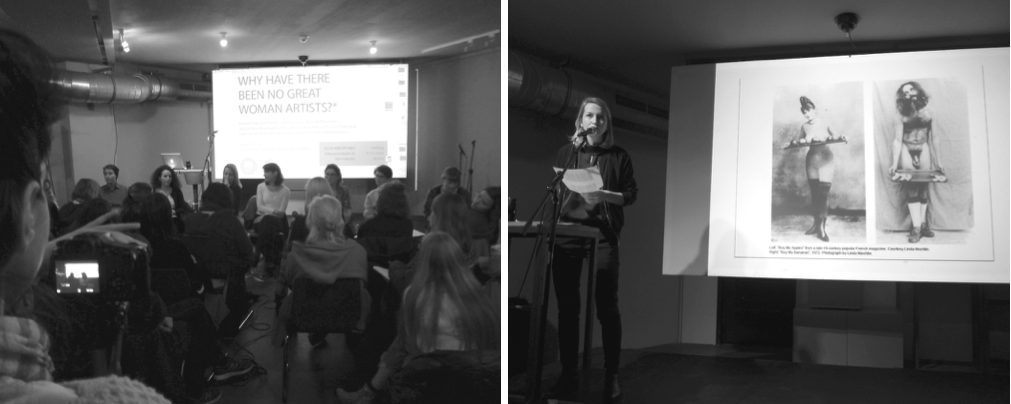
The SALOON Berlin network was founded in 2012 by the art historian and author Tina Sauerlaender. It now has representatives from various artistic fields in several major European cities. Ornella Fieres, artist and chairwoman of the network, answered a few questions:
What makes SALOON special is its focus on personal interaction and mutual support. Which collaboration or event is particularly memorable for you?
The SALOON Berlin has been in existence since 2012 and since then numerous collaborations between the members of the network have developed. These include group exhibitions with SALOON artists as well as interdisciplinary co-productions, for example by art scholars and curators. Of our public events, we are particularly proud of the first SALOON exhibition at the SEXAUER Gallery, as well as our collaboration Invisible To Whom? Not To Me, with the Distinguished Diva Collective. In addition, the annual series of lectures Why Have There Been No Great Women Artists?* with Performing Encounters gives us the opportunity to network with local women scientists at the annual SALOON lecture series. This event is open to the public and is always very popular.
What do you think makes your network especially strong?
For several years now, our network has been expanding worldwide and, in addition to our offices in Berlin, we have offices in Barcelona, Brussels, Dresden, Hamburg, London, Paris, Prague, Tel Aviv and Vienna. Further cities will follow. What unites the members in all locations is the desire for professional and productive networking. In 2018 we organized the first international exchange between the networks: Members from the SALOON cities were able to travel to the other locations and were welcomed there with an extensive cultural programme. Many friendships and professional collaberations have resulted from the exchange. So, our network is international and professional and at the same time personal and friendly. All SALOON board members exchange information in monthly meetings and work free of charge. This also works through the support of our members.
Together with Performing Encounters, Saloon has also created the event series Why Have There Been No Great Women Artists? The title comes from the groundbreaking text of the same name by Linda Nochlin from 1971. Do you think the art world is any further along today?
Since 1971, I'm sure things have been moving in the right direction. But progress is far too slow. In the 1980s, the proportion of art by women in museums worldwide was just under 5%. Today, in 2020, one would think that this would have changed. Unfortunately this is not the case: whether in public collections, gallery representations or art publications - female artists are far too underrepresented. With their work, the members of SALOON try to work against this trend on an international level.
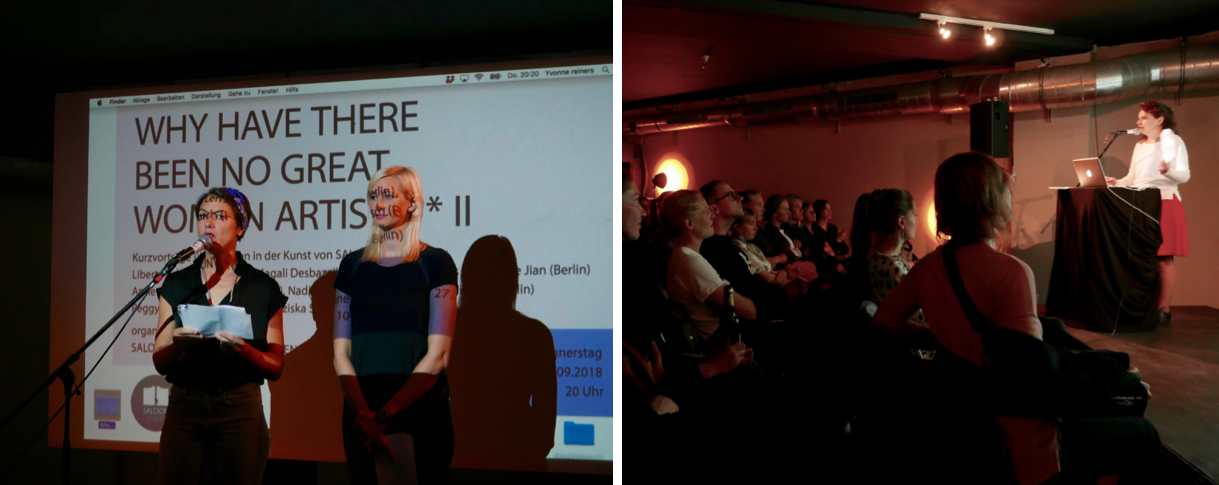
MalerinnenNetzWerk / Women Painters' Network / Berlin-Leipzig (MNW)
Another quite young, but very active organization that supports women artists is the MalerinnenNetzWerk Berlin-Leipzig (MNW). We spoke to Kathrin Landa, the initiator of the project, about the network:
How did the network come about and how do you organize yourselves?
I founded MNW in 2015 because I felt that the need was there, it was time. In 2016 the MalerinnenNetzWerk became a non-profit association, and Tanja Selzer has been the chairwoman since last year. Berlin and Leipzig were chosen because they are exciting cities with lively art scenes, and there is a kind of magnetism between the two cities. All artists from the MNW live or have their studios in Berlin or Leipzig.
In Leipzig - a few years ago a hidden gem, now a hipster city -the painting scene still seems to me strangely male-dominated in public perception. Although there are fantastic female painters in Leipzig, financially, the most successful representatives of the so-called New Leipzig School are still overwhelmingly men. In Berlin, this imbalance is not apparent at first glance; there are many networks and politically active female artists here. On closer inspection, however, there is also an enormous imbalance here, as the IFSE study from 2018 shows. It states that female artists in Berlin earn on average 28 percent less than male artists who in turn have 22 percent more solo exhibitions. Peak values were achieved during the Gallery Weekend in spring 2018, where male artists had 40 percent more solo exhibitions than female artists. This shows that the need to work for more equality in exhibitions and awards is enormous in both cities. It is nice to note that since 2015, the discourse has been ignited by the MNW, among others. Today, a lot has been set in motion. This can also be felt on the grounds of the old cotton spinning mill in Leipzig, where renowned galleries now show exhibitions exclusively with women artists, as a matter of course. Moreover, several galleries there are now run by women.
The MalerinnenNetzWerk has no hierarchy - first we vote, and only then are we able to act. The members meet every 6 weeks, alternately in Berlin and Leipzig. At each meeting we focus on one artist and her work. There is always an exciting exchange and when 29 strong personalities meet, it can also lead to heated discussions. But that is exactly what makes the round. The group is not too big, everyone knows everyone and is allowed to express themselves freely.
MNW's aim is to remain small and manageable, but to cooperate with other artists, curators and networks as well.
The painters deal with very different subjects, techniques and experiences. What do they have in common?
Many female artists in the MNW paint figuratively - a tradition that goes back to the GDR era. But this is not a conscious concept. The MalerinnenNetzWerk wants to be broadly based and not dogmatic. We have many different attitudes in the group - some are feminist and very political, fighting for the introduction of quotas for women, while others focus exclusively on art and the possibility to evoke thought-provoking impulses through it. In any case, we all have the intention to empower women on the art market in common. More visibility for women's art will change the situation.
What qualities should new members bring with them? What is special about the MNW?
We only admit one female artist per year. One of our members introduces the applicant and her work and the group votes on the admission. There are no other criteria. By the way, biological gender is not important. We also accept members who feel they are women and who want to work for equality.
What makes MNW special, is the high artistic level of the discussion. At some point after my studies I noticed that there was nobody left to discuss my work with – and as an artist you need criticism and exchange to avoid isolation. At the exhibition "The better half" there was a panel discussion and I felt what a huge rage women carry in their stomachs and how much is being concealed. The next day I developed the concept for the MNW and wrote to all the painters I knew in Berlin and Leipzig. We started with about 15 female painters, today there are 29 of us, and we have already completed numerous exciting projects that inspire us for our further work. The last big exhibition "VOIX" at the Museum of Fine Arts Leipzig (curated by Isabelle Dutoit, Nina K. Jurk, Verena Landau, Maria Sainz Rueda and Kathrin Thiele) has stimulated the discourse about women in painting, and we are proud of it.
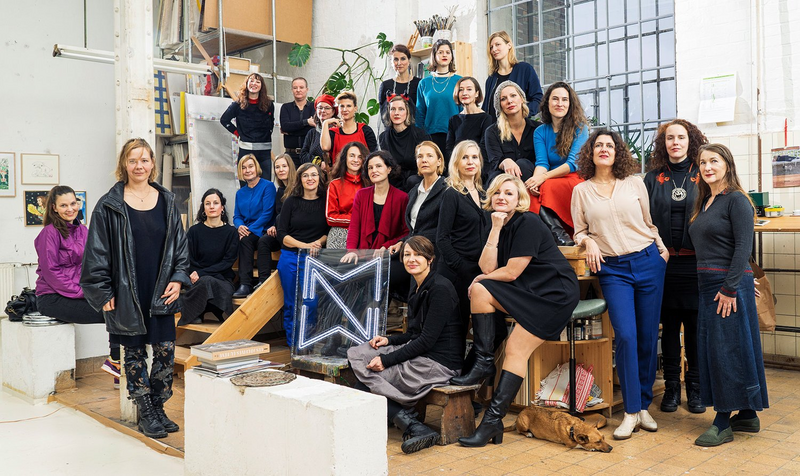
Both interviews clearly show how far the struggle for equality for artists is from being achieved. In Germany the Bundesverband Bildender Künstlerinnen und Künstler gives a glimpse into the figures by means of regular surveys. The study "Frauen-in-Kultur-und-Medien (Women in Culture and Media)" also paints a sobering picture.
However, it is not only important to work on the current situation, but also to take a more differentiated look at the past. The organization AWARE: Archives of Women Artists, Research and Exhibitions makes an important contribution to this. The non-profit organisation has set itself the task of researching, preparing and making accessible information about women artists of the 20th century. The English- and French-language magazine offers a broad and scientific overview of the international art scene of the past century to the present.
In most fields, and this is perhaps the bright spot, there are now networks of women who strengthen each other: whether professional and branch networks (webgrrls e.V., Deutscher Frauenrat, Unternehmerfrauen im Handwerk Bayern, Deutscher Akademikerinnenbund e.V. etc.), service clubs (Soroptimist International, Zonta), associations that operate internationally or regionally, networks for mothers (MumsLikeUs) or networks for women in the book trade and publishing industry (Bücherfrauen e.V. ).
They have all realised: only together can we change the situation!
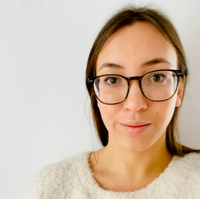
Author: Anastasia Kozlova
Anastasia is an art historian and was an intern at sculpture network until March 2020.
Titel: SALOON-Event "Why Have There Been No Great Women Artists?"* Part II, ACUD, Berlin 2018, Photo © Darja Zub
